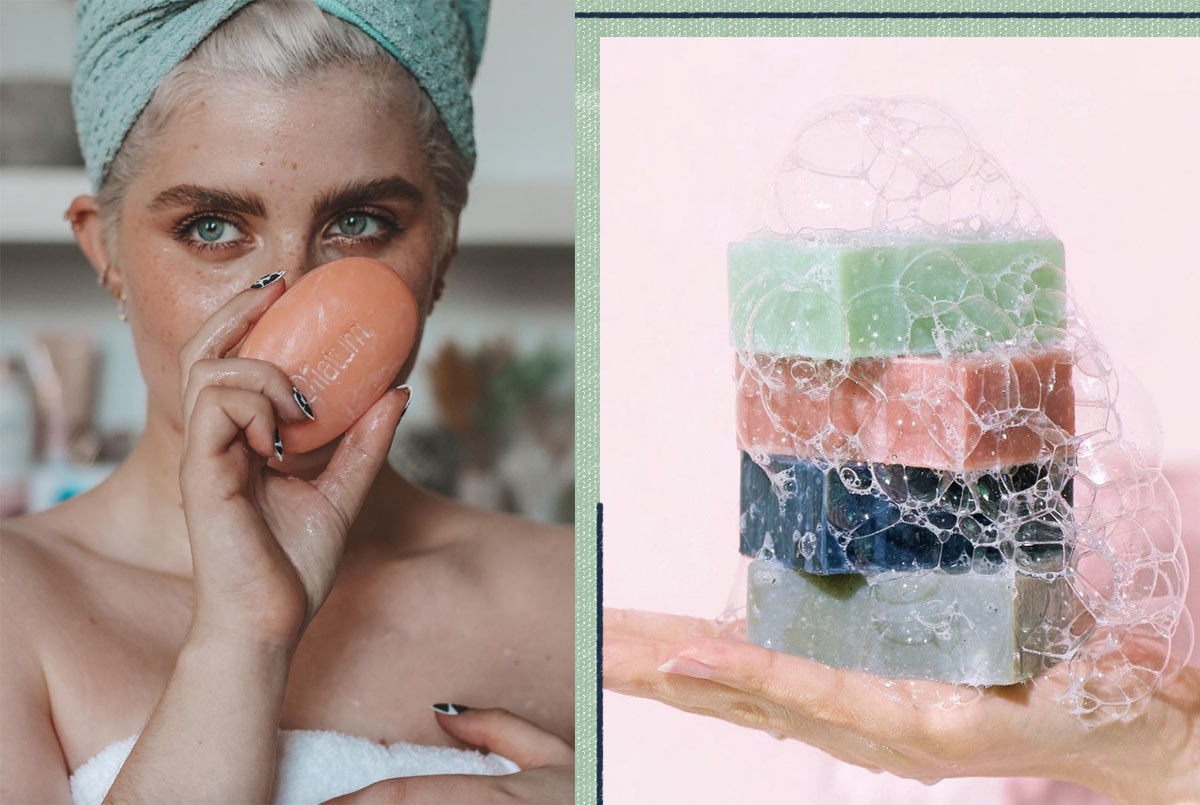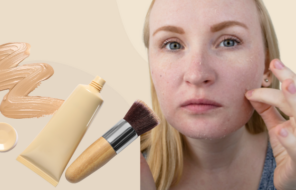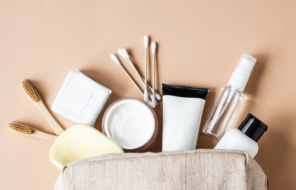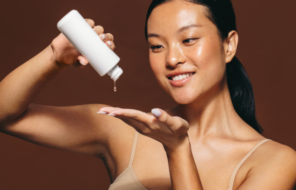I feel like bar soaps have gotten a bad rap in the past when it comes to cleansing. With so many varieties of cleansers and body washes on the market, who would think to use a bar of soap? But cleansing bars can be just as diverse as your skin type, in their makeup, and how they suit your needs. You may end up finding your holy grail cleanser in a bar soap! Keep reading as we discuss the different types of bar soaps available and how best to use them.
In this article:
- Types of Bar Soaps
- How to Choose the Best Bar Soap for Your Skin Type
- The Pros and Cons of Bar Soap
- Is Bar Soap Sanitary?
- How to Use a Bar Soap for a Better Cleansing Experience
- How to Make Your Bar Soap Last Longer
Types of Bar Soaps
Traditionally, soaps are made by mixing oils with a liquid (most often water) and an alkali. An alkali is a soluble salt used in soap making. An alkali triggers a chemical process called saponification, which is what turns the mixture into soap.
The most common alkali in soaps is sodium hydroxide or lye. While it sounds harsh, there is no lye left in the resulting soap product, so you won’t need to worry about harming your skin when it comes to soaps.
There are a few different types of bar soaps available, and which one you use will often come down to your individual skin needs. Let’s look at the different types and what makes them different.
Traditional Soaps
True soaps, as we mentioned above, are the ones traditionally made with oils that have been saponified with an alkali. Think of true soaps as the origin point for the rest of these types.
For centuries, the main ingredients for soaps were animal fats, vegetable oils, water, and an alkali. The most common ingredients for traditional soaps were beef (tallow) or pork fats (lard). These don’t sound too appealing today but bear with us.
Modern traditional soaps have a much more attractive ingredients list that includes coconut oil, palm oil, olive oil, and more. Vegan soaps don’t contain any animal fat at all. Brands can also add fragrances, colors, herbs, and decor to make traditional soaps more attractive to consumers.

Syndet Soaps
If you’ve bought bar soap at the drugstore, you’re most likely purchasing a syndet bar. A syndet bar is a bar soap made from synthetic surfactants and is processed in different ways than traditional saponification. Instead of being made from animal fats and oils, they are made with synthetic ingredients. But don’t fear artificial ingredients. Some of the gentlest products on the market are made with synthetic ingredients, such as Dove, Cetaphil, and Eucerin.
Syndet bars are not considered soap, technically. The ingredients here don’t go through the process of saponification because of the absence of alkali salts of fatty acids. Instead, these bars contain synthetic surfactants like oils, fats, and petroleum products. In fact, the word “syndet” comes from the combination of “synthetic” and “detergent.”
This is why manufacturers of syndet bars are legally not allowed to advertise them as soap. They substitute the term “soap bar” with words like “cleansing bar,” “beauty bar,” “bath bar,” “body bar,” and other creative ways of calling it anything but “soap.”
Superfatted Soaps
These soaps are true soaps that are made with extra oils. These excess oils make the soap more moisturizing, but some people find them too heavy and not cleansing enough.
Transparent Soaps
Both true soaps and syndet soaps can be transparent soaps. Those are soaps made with additional glycerin to increase the moisturizing properties. Sometimes, the additional glycerin can result in a milder soap, but not always.
Combination Soaps
Combination soaps are typically a combination of different cleansers, most often a variety of superfatted and syndet bars. These bar soaps combine their ingredients to reduce irritation and dryness.
How to Choose the Best Bar Soap for Your Skin Type
Like anything that you use on your body or face for your skincare routine, choosing the best bar soap for your skin type can be super confusing.
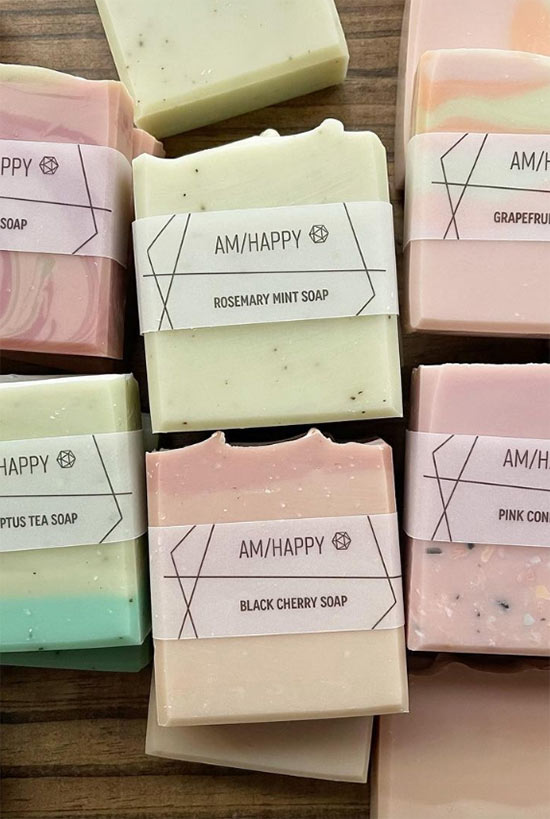
Remember that you will most likely need two different types – one for your body and another for your face. The skin on your face is much more sensitive than the skin on your body, so a bar soap that works wonders on your body may be irritating on your face.
Know Your Skin Type: Knowing your skin type before you choose a bar soap is essential. If you aren’t sure of your skin type, you may want to opt for speaking to a dermatologist to determine which type of soap is best for your skin.
When choosing a bar soap for your skin type, remember to listen to your skin. If your skin feels tight and itchy after using your bar soap, you are most likely using one that doesn’t agree with your skin.
Below are some suggestions for which types of bar soaps to use for your skin type.
Sensitive Skin
If you have sensitive skin like I do, of the different choices above, your best option may be to purchase a transparent soap, which can be milder on your skin. Look for organic bars with soothing natural ingredients, such as aloe vera or some herbs.
Dry Skin
If you have dry skin, or dry skin conditions, such as eczema, or psoriasis, then a glycerin-based soap or transparent soap may suit your needs. Glycerin can lock in the natural moisture of your skin and prevent drying.
Choose fragrance-free mild soaps with soothing organic ingredients, including vitamin E, coconut oil, shea butter, aloe vera, and almond oil. Make sure to steer clear of bars containing harsh chemicals like sodium laureth sulfate that will be extra-drying on your skin.
Oily Skin
Oily skin can often be lacking in moisture, resulting in additional oil production. You can similarly treat oily skin to how you would treat dry skin.
To combat the additional oil production, you should opt for non-comedogenic transparent or combination soaps with mild ingredients like sea salt, oatmeal, brown sugar, and peach pits.
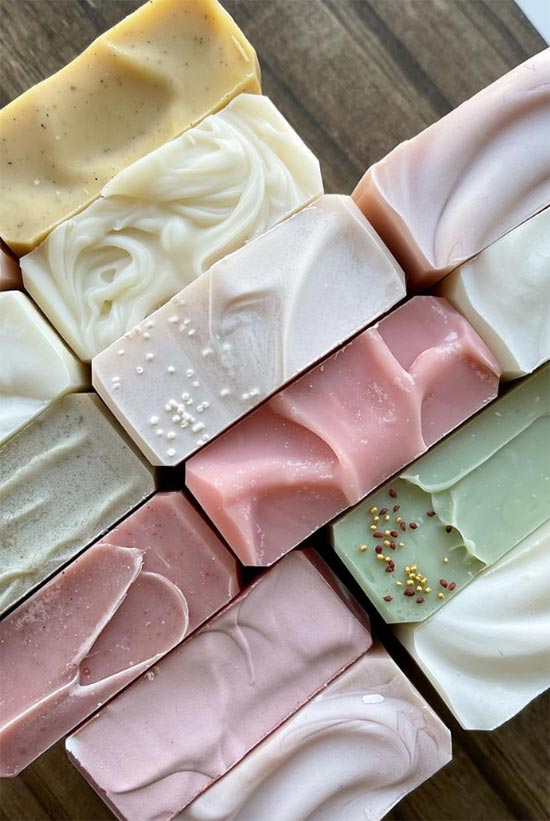
Combination Skin
If you have combination skin, you can choose a combination bar soap, which, as we discussed, is a combination of a syndet bar and superfatted bar. This will provide you with additional moisture while still cleansing sufficiently.
Acne-Prone Skin
If your skin was medically diagnosed with acne, eczema, psoriasis, allergies, or more, be very picky when choosing skincare products like soap. A soap bar promising to completely treat your acne is too good to be true. First, you have to be sure that what you have is, indeed, acne. The severity and triggers of the condition will also be decisive.
Your best bet would be mild exfoliating bars, like ones formulated with salicylic acid to fight blackheads, breakouts, and an uneven skin texture. Even with these types of bar soaps, make sure not to over-exfoliate.
As a rule of thumb, try to avoid using fragranced and decorated soap or cleansing bars, regardless of your skin type. Opt out of acidic products since they can alter the pH levels of your skin.
The Pros and Cons of Bar Soap
When it comes to using a bar soap vs. using another type of cleanser, such as a body wash, it comes down to what you prefer and what works best for your skin. But to break it down in other terms, here are some pros and cons of bar soap vs. different types of soaps.
Pros:
- Better for The Environment: Using bar soap, you will lessen the harm you do to the environment. There is less packaging, energy, and resources used to provide you with a product.
- More Cost-Effective: Bar soaps are often significantly less costly than a shower gel or body wash and usually last longer.
- Minimal Ingredients: Bar soaps and bar cleansers often contain minimal ingredients, so the product you are left with will most likely have a higher concentration of the ingredients you need, without including the ones you don’t.
- Travel-Friendly: Bar soap is easily cut into smaller pieces to toss into your carry-on and with no risk of spilling!
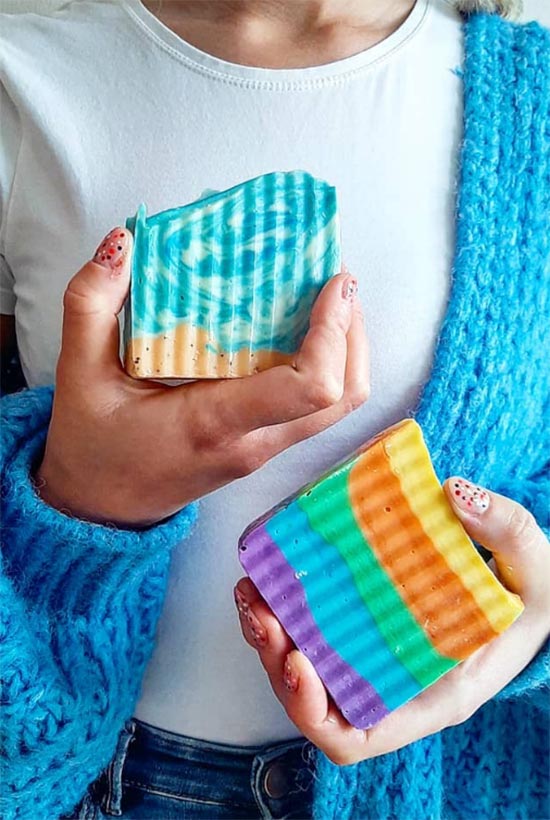
Cons:
- Less Moisturizing: Body washes and shower gels will often include additional moisturizing ingredients to address dry or sensitive skin issues. If you have these issues with your skin, a bar soap may not be the best choice for you.
- Less Hygienic (Sort of): It isn’t that bar soaps or bar cleansers are necessarily unsanitary. Where it starts to become less hygienic is in how you store the bar. You should also never share bar soap with another person. Let’s take a more detailed look at that below.
Is Bar Soap Sanitary?
Bar soap often gets a bad rap as far as being sanitary goes. Your bar soap or cleanser may sit on a soap dish, or your counter, or shower organizer. Sitting out in a naturally warm, wet environment like your bathroom may have you wondering if your bar soap is crawling with bacteria.
The short answer is probably not. The germs that reside on your bar soap are most likely from your skin and won’t automatically make you sick.
Soaps are kind of, sort of self-cleaning when they touch the water. Once you start lathering the soap bar in the shower for about 15 seconds, it eliminates the bacteria accumulated on its surface and is clean to be used on your skin.
If you use a scrubbing implement like a washcloth or loofah, these items can deposit additional bacteria onto your bar soap. To reduce the bacteria in these places, make sure to replace them often.
If you’re worried about your bar soap or cleanser making you sick, you don’t need to fret too much. It’s not likely that your bar soap will make you sick, but there are a few exceptions to this rule. If you have an open cut, you may be more vulnerable to infections, such as athlete’s foot or a virus like the common cold or the flu.
How to Keep Your Bar Soap as Sanitary as Possible
- Rinse your bar soap off before using it on your body. This will remove any soapy “slime” from the surface.
- Apply the bar soap directly to your body instead of using a scrubbing implement. If you’re very pro loofah or washcloth, be sure to use a clean one every time you shower.
- Keep your bar soap dry between uses. You can use a soap dish with holes to drain the excess water from the soap in between washes.
How to Use a Bar Soap for a Better Cleansing Experience
Next, we’ll discuss how to best use bar soap. We recommend starting from the top, with your face, to make sure that you have a complete rinse and don’t leave behind any soapy residue.
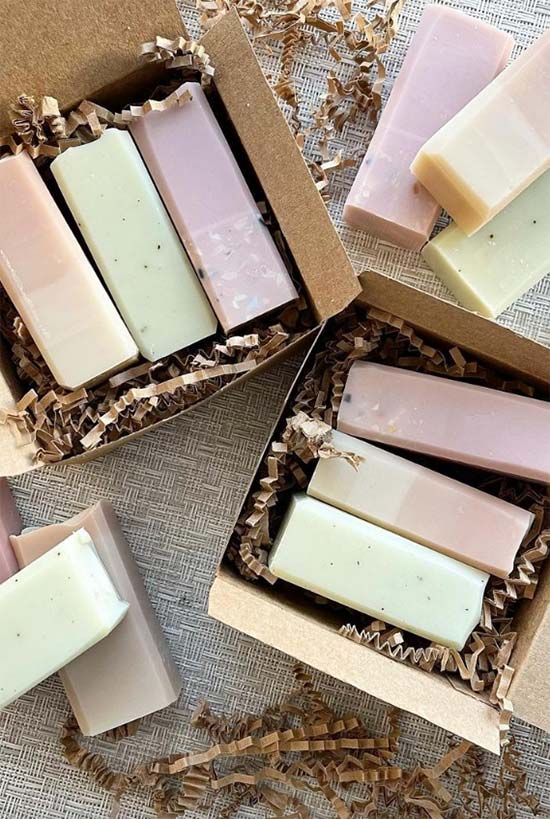
For Your Face:
- Choose a bar soap specifically for cleansing the face. Consult our list of the best bar soaps if you’re having trouble choosing one!
- To have the most hygienic experience possible, make sure your hands are clean before you begin lathering.
- After wetting your face thoroughly, work the bar soap into a nice lather between your hands, being sure to use enough for your entire face and décolletage.
- Massage the soap into your skin for 30 seconds, using circular motions. You can also use a washcloth or face scrubber, but don’t be too rough.
For Your Body:
- Once you’re finished with your face and chest, continue working the lather across your shoulders, arms, waist, legs, and feet.
- Repeat the process on the back of your body as much as you can reach.
- When you’re done, be sure to rinse your body thoroughly, from top to bottom. Leaving any residue on your skin may result in irritation.
How to Make Your Bar Soap Last Longer
If you’re committed to embracing bar soaps and cleansers, you may be wondering how to get the most out of your product. To ensure your bar soap lasts as long as possible, follow these steps.
- Keep It Dry: When you aren’t lathering up, store your bar soap in a soap dish with holes to allow the water to drain. Store it away from the stream of your shower.
- Use a Washcloth: A washcloth or loofah will absorb the lather of the soap and extend it. You’ll use less soap but increase the lather.
- Cut the Bar up: If you cut your bar in halves, or thirds, or smaller, and only use it sparingly, you will see a longer lifespan for your bar soap.
- Lower Your Shower Temperature: While I love a piping hot shower, the higher the water temperature, the quicker your bar soap is going to dissolve. Cooler water will also allow the soap to maintain its shape and consistency.
If and when you’re ready to give bar soaps and cleansers a try, be sure to reference this guide!
Photos via @raquelsmx, @herbivorebotanicals, Instagram

